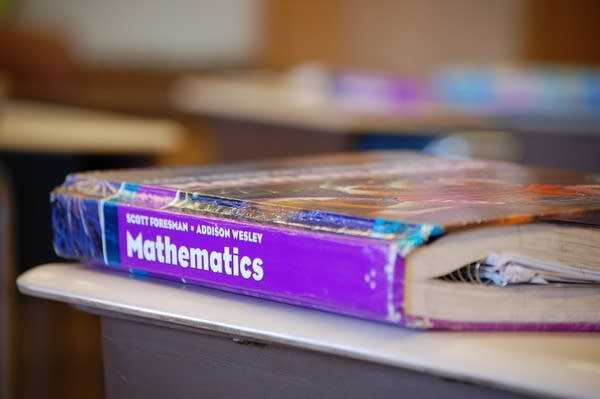Schools still waiting for stimulus money

It's easy to see signs of the federal stimulus money at work in Minnesota, along highways where crews have posted notices of projects funded with stimulus money.
But school districts in Minnesota are still waiting for their share of Minnesota's $800 million in stimulus money for education.
The Waubun School district on the White Earth reservation in northwest Minnesota is just one district that's waiting for stimulus funds. Leaders there had to cut about $600,000 this spring to balance a $7.5 million budget.

Nearly $300,000 in stimulus money could close some of that gap over the next two years. But Superintendent Mitch Anderson isn't rushing to spend the money yet, because he still has so many unanswered questions.
Create a More Connected Minnesota
MPR News is your trusted resource for the news you need. With your support, MPR News brings accessible, courageous journalism and authentic conversation to everyone - free of paywalls and barriers. Your gift makes a difference.
"I've been to several meetings and workshops the last couple weeks," said Anderson. "I was at one three weeks ago with a presenter, and I went to a meeting the next week with the same presenter -- and some of the rules had changed just in that week."
Anderson says his impression is that a lot of people in the community think stimulus money will save the day and prevent district cuts, but it won't.
For one, education stimulus money will only make its way to local districts after they spend their own money, and ask for a reimbursement. Secondly, there are a lot of rules.
"That's the frustration I've heard from a lot of superintendents and principals is that they could really use the money in their general funds, to help out in the areas where we cut," said Anderson. "But with all the strings attached, you just aren't able to use it the way you'd like to use it."
"[The stimulus rules are] not strings, they're ropes. The stimulus dollars are meant to be spent."
Many of those "strings" are contained in a thick, black binder that's always at Lisa Mueller's desk at the Minnesota Department of Education.
Mueller is the agency's stimulus coordinator, though some colleagues have called her the "stimulus tsarina."
Some education stimulus money is in Minnesota, and more will arrive in coming months. But it hasn't made it to local districts. It's sitting in a state account, waiting until everyone's ready to use it.
For example, a lot of computers need updates so districts and the state can track what's being spent where.
"It requires a lot of additional work for us in terms of developing our systems, reviewing all the federal guidance that's out there," Mueller said. "So we've been spending a lot of time internally, as well as externally, providing information to districts, providing training."
It's at those training sessions that state officials have heard from frustrated school leaders who thought the stimulus money would be in their coffers by now -- and that they'd like more flexibility in spending it.

Anoka-Hennepin, the state's largest district by enrollment, is in line for about $12.5 million in stimulus money. But Superintendent Dennis Carlson says it's not easy wade through the various requirements to spend that money on what he considers the district's highest priorities.
Carlson gives an example to illustrate that point. He says discussions about stimulus spending resulted in questions being raised about, of all things, the district's policy on student suspensions. He says he spent weeks trying to determine whether the issue would impact how his district could spend its stimulus money.
Carlson says he and state education officials he cleared up the matter last week, and the spending flexibility will be there. But there will be plenty of other restrictions to deal with, on everything from Head Start to special education.
"They're not strings, they're ropes," Carlson said. "The stimulus dollars are meant to be spent. That's the whole idea of the stimulus package from the federal government. They're meant to revitalize the economy.
"And in hindsight, I would argue with the administration that we don't necessarily need more money for special education in Anoka-Hennepin."
Carlson says he'll try to focus spending in a way that won't make things even harder down the road, when the stimulus money dries up.
If he hires teachers with stimulus money, for example, the district will have to find new money in two years to either keep those teachers on the payroll, or let them go at that time.
Charlie Kyte, with the Minnesota Association of School Administrators, says while other parts of the stimulus call for money to be spent quickly, there's logic to not rushing on education spending.
"Waiting a little bit kind of goes against the whole federal government's idea of spending the money fast, but ultimately it's going to allow us to spend it more wisely," Kyte said, in an interview.
When all is said and done, Minnesota will have received an estimated $828 million to spend on K-12 education from the stimulus. But it won't have the same face as, say, a highway construction project -- where you can post a sign, telling the world it's a stimulus project.
With education, parents and teachers might see some new computers and textbooks in the classroom. But you can't hang a sign on a teacher that says "This teacher was saved from a layoff by federal stimulus money."
